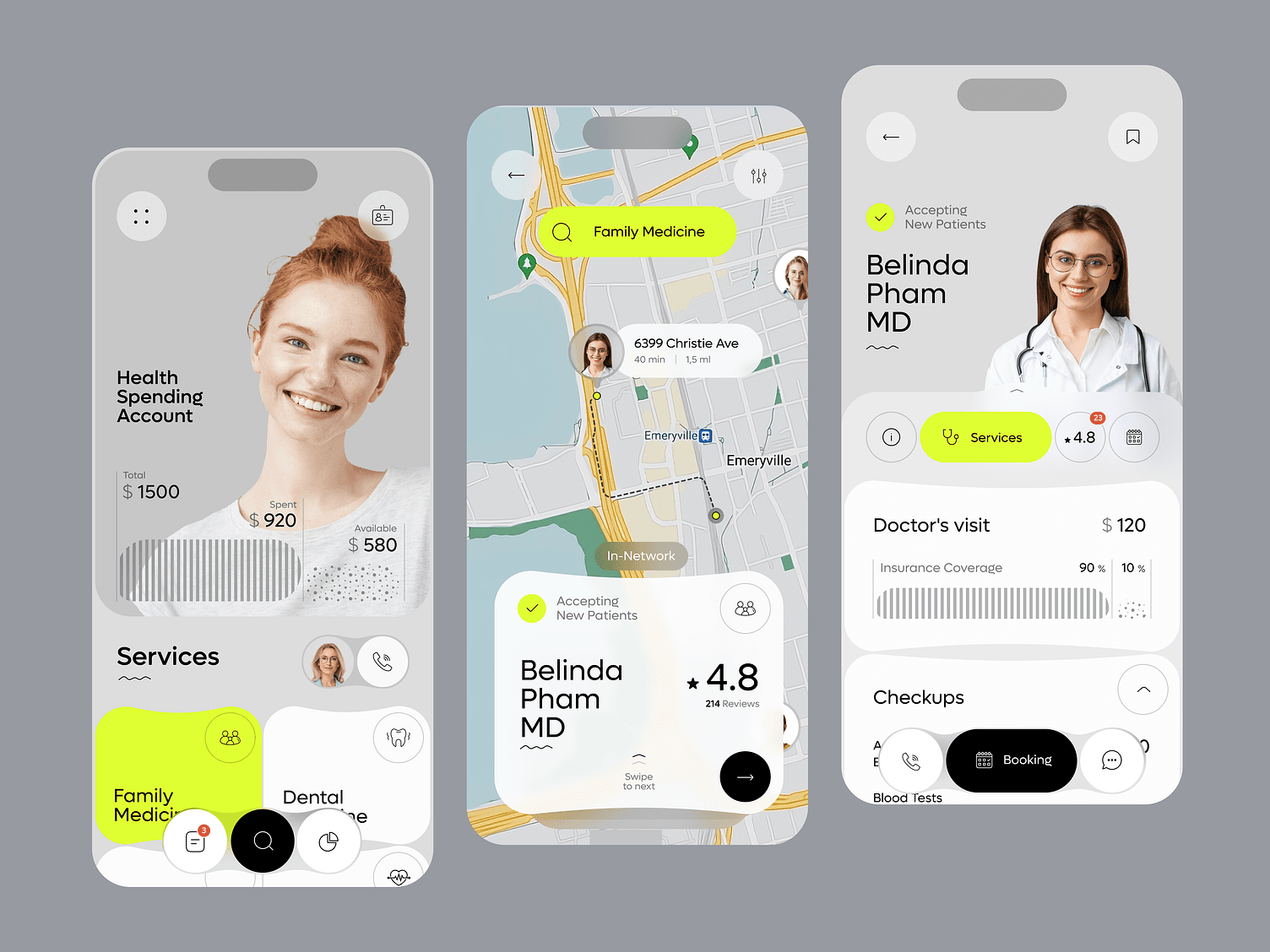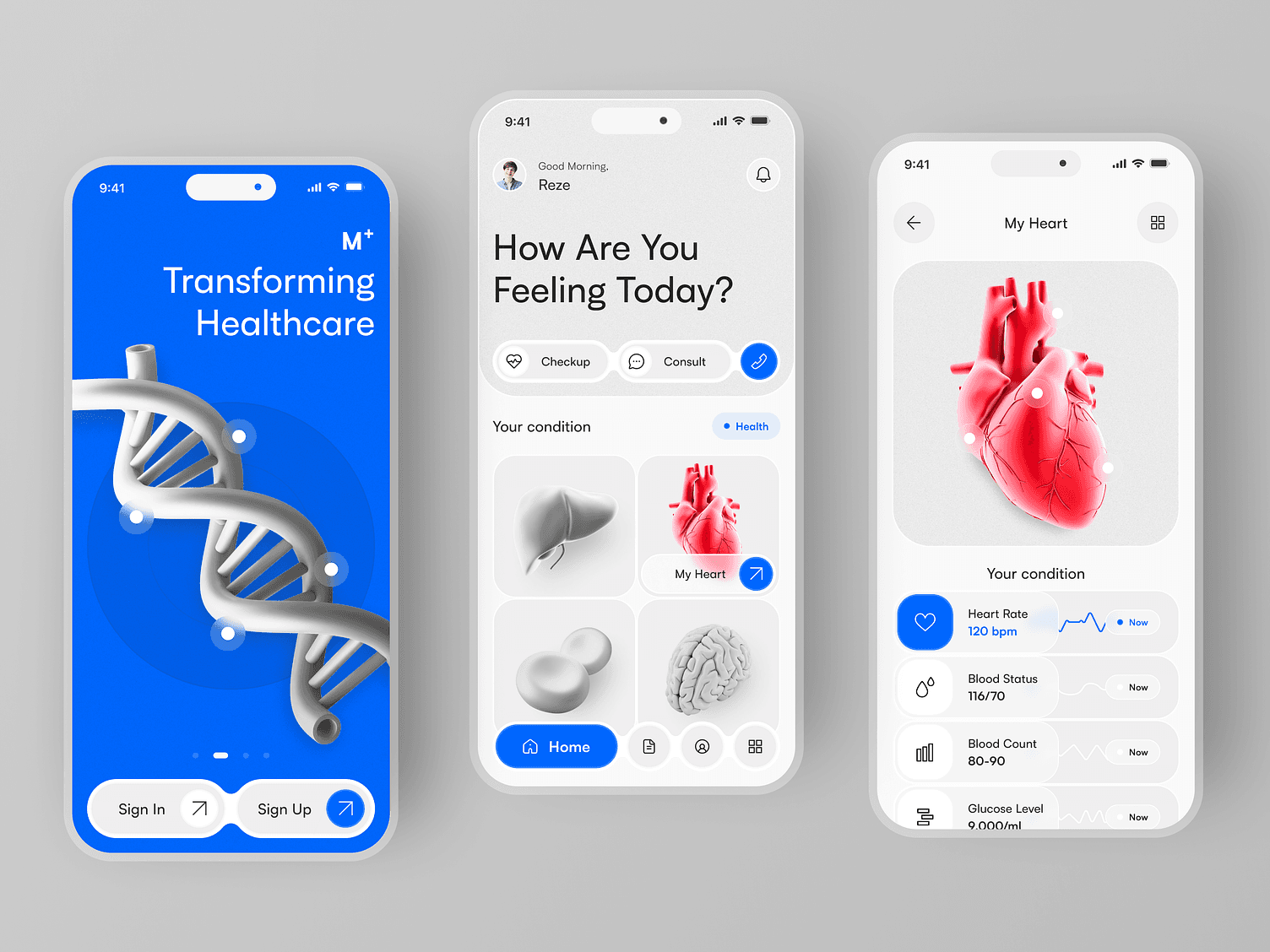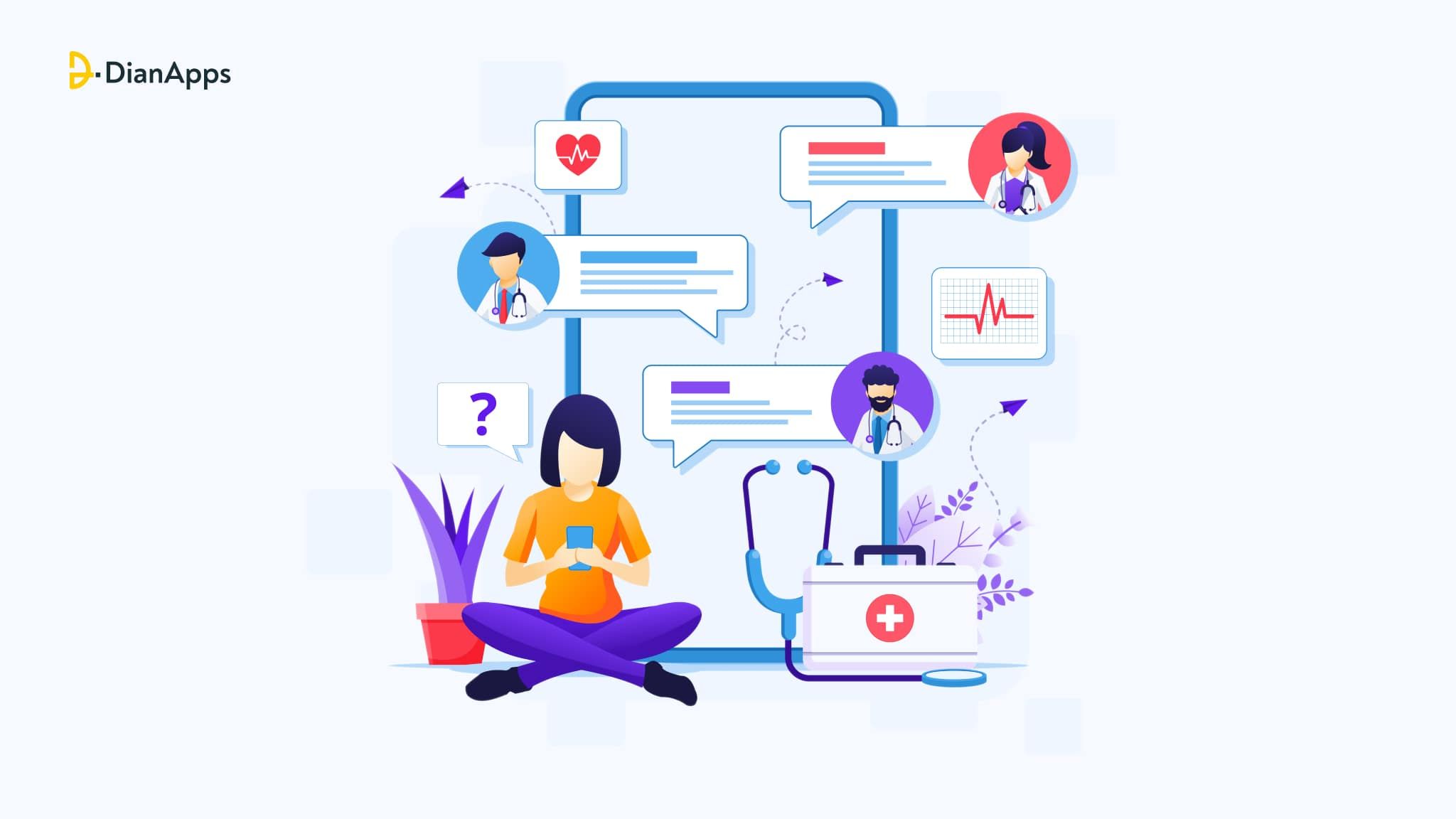The medical field has vastly improved and overcomes the challenges of treating people in need in the right manner, especially during the time of national crisis. We all have seen the outbreak of COVID-19 and how it raised the urgency of healthcare consultation and online medicine delivery in the middle of the nationwide lockdown.
This change in wave entered the newfound interest of healthcare professionals to hook themselves with a modern perspective– IT solutions for healthcare!
According to 2027 predictions, the healthcare IT market is set to reach a staggering $9774.5 billion with significant growth expected to reach 19.8% CAGR over the next few years.
While that’s worthwhile, readers must know that a major part of this statistic is due to the demand for personalized healthcare solutions that were introduced by custom software development companies in exchange for the well-being and convenience of the general public and push forward the ideas of organizations to build websites and apps for their customers.
Curious to find what benefits can custom healthcare development services offer and which best practices to follow and implement that smoothly tackle the healthcare software systems while adding value to the business overall.
The state of Custom Healthcare Software in 2024

Every element of our life has been changed by information technology. The experience of such a significant event in the post-pandemic era compels us to consider app development for healthcare which will allow medical companies to provide better facilities and approach the problem from a new perspective.
The entire Hospital Management System industry is now leading the charge to digitize the antiquated paper-based system, improving patient safety, enabling portability, and enhancing the sector’s effectiveness through the use of electronic medical records.
The size of the worldwide healthcare analytics market is expected to increase at a compound annual growth rate (CAGR) of 15.3% from $23.51 billion in 2020 to $96.90 billion by 2030.
Top Benefits of Custom Healthcare Software Development
Are you curious about how these solutions might help facilitate transformation within your company? These are a few particular ways that businesses profit from hiring custom medical software.

Enhanced Security of Data
Every day, the healthcare sector produces enormous volumes of sensitive data across a variety of platforms and methods. Therefore, it is crucial to guarantee that this data is safe and shielded from unwanted access.
In order to do this, all cloud service providers, email service providers, search engines, chatbots, websites, and applications are striving to comply with HIPAA, which ensures that healthcare businesses receive the best possible degree of data protection. These providers may reassure their clients that their sensitive data is secure and treated with the highest care by adhering to HIPAA laws.
Outstanding Patient Care
Goodbye to lengthy wait times at the hospital and welcome to first-rate patient care! Patients may get the greatest care and consultation with just one click thanks to AI-driven healthcare software. All of this is possible because to online medical consultations, which have completely changed how patients receive care, even in emergency situations.
Enhanced Effectiveness
The productivity and efficiency of your company may be significantly increased with custom software. Your team will benefit from speedier workflow as a consequence of the improved automation in software development and service delivery, which will free up their time to adjust to routine healthcare operations. This implies that your company will be able to more easily concentrate on accomplishing its main aims and objectives.
Flexibility and Scalability
Healthcare firms may adapt their demands to changes in patient volume, regulatory restrictions, and technology improvements using custom healthcare software. Custom software development services offer scalability and flexibility as benefits to meet evolving business needs, such as adding new features, expanding to new locations, or integrating with other systems.
Read: 10 Ways Custom Software Development is Transforming The Healthcare Sector
Best practices of custom healthcare software development
That’s not an easy deal to describe all the steps and components to keep in mind while working on the development strategy for your health application. Because there’s a lot.
Nevertheless, below, we’ll talk about everything you need, in our opinion, to think about before and after you set out on this journey.
To make it more simple, we’ve broken down this part into three broad phases that you’ll certainly have on your project.
Pre-Development Phase
In terms of strategy, the pre-development phase is the most critical stage as it’s where you’re crafting your plan of action for the entire healthcare app development project. As you can probably guess, this phase involves thorough research and preparation before actual development begins. So, what do you need to do here?
1. Evaluation of Needs
Yes, this is a symbolic step, but you also need to pinpoint the exact problems or gaps in healthcare that the app seeks to fill. To do that, learn about the needs, preferences, and pain points of stakeholders, healthcare professionals, and potential end users.
2. Analysis of Markets
To figure out what’s going on, you need next examine market trends and the competitive environment. Take into account current options, the advantages and disadvantages of competitors, and prospective chances for differentiation. This will assist you in honing the concept of the app, identifying the intended user base, and strategically placing the app in the marketplace.
3. Regulatory Compliance
No way you can’t miss this part since you’re developing not just a regular consumer app but a healthcare solution. If you haven’t done it yet for some reason, take time to research and understand regulatory requirements and compliance standards applicable to your healthcare app.
They may encompass well-known HIPAA, GDPR, or FDA regulations, and more specific like FHIR or HL7. Ensuring compliance with these regulations from the outset is crucial for protecting patient data, ensuring safety, and avoiding legal issues.
Discover more about HIPAA-Compliant App Development
4. Technology Stack Selection
Here, together with your team you should think about the appropriate technology stack — programming languages, frameworks, databases, etc. It will all be based on the app’s requirements, scalability needs, security considerations, and development team expertise. Why doing it so soon? Because selecting the right technology stack lays the foundation for efficient development and future scalability.
5. Budgeting and Resource Planning
This is probaly the most anticipated part. It’s where you estimate project costs, allocate the budget, and plan staffing requirements. Your team should include such experts as Business Analysts, mobile developers, UI/UX designers, and QA specialists.
Sometimes, if your project is more complex, you may need the help of data engineers or even AI experts. Setting realistic budgets and resource allocations is vital for smooth project execution. Moreover, it prevents unexpected project delays or budget overruns.
6. Prototyping and Wireframing
Finally, you can validate your idea and visualize your app’s user interface, navigation flow, and functionality. Iteratively refining the prototypes and wireframes based on feedback from stakeholders and end-users can optimize the user experience and minimize development risks. Another way to validate your idea and make sure your app is viable is to develop an MVP product first.
Development Phase
The next part we want to overview regarding the strategy is the development phase itself. Here, pay attention to the following elements:
1. Agile Development Methodology
It’s not something you haven’t heard about, but it’s a good idea to stick to the agile development approach, such as Scrum or Kanban. It facilitates iterative development, continuous feedback, and adaptability to changing requirements. With this methodology, you can easily promote collaboration, transparency, and rapid delivery of incremental updates. Thus, enhancing the overall efficiency and quality of the development process.
2. User-Centric Design
Excellent user experience is one of the keys to making your app useful and increasing patient engagement. That’s why you need to ensure your mobile solution’s UI/UX design is user-centered and provides easy navigation, coherent visuals, and informative graphics.
You see, the user-friendly design facilitates all interactions between the app and users and creates a smooth look and feel that helps healthcare professionals, patients, and caregivers achieve better outcomes.
3. Backend Development
It might be the case that you’ll need to integrate your app with other systems like EHR, PMS, ERP, or any third-party APIs. Maybe, you’ll also need to support robust data storage. That’s where backend infrastructure and databases come into play. Consider implementing scalable and secure backend solutions that ensure optimal performance, data reliability, and interoperability with existing healthcare IT infrastructure.
You also have to think about strong encryption protocols and secure data transmission methods, such as SSL/TLS. This is to protect sensitive PHI stored on servers and transmitted between the app and backend systems.
4. Frontend Development
In developing frontend interfaces for mobile healthcare apps, your team should prioritize responsive design principles for seamless adaptation to various devices, platforms, and orientations. Whether you develop a native app for Android or iOS or build a cross-platform solution, you need to adhere to platform-specific design guidelines.
On top of that, pursue optimization for performance and offline capabilities as it usually enhances user experiences, minimizes loading times, and ensures uninterrupted access to critical features.
5. Quality Assurance and Testing
The last point here is conducting comprehensive testing and quality assurance activities. This is a very crucial step that can include various tests like functional, performance, security, and usability. QA essentially helps in identifying and resolving bugs, ensuring app stability, and validating compliance with regulatory standards before deployment.
Post-Development Phase
So, you have the application ready to go live. What’s next?
1. Deployment and Launch
First in this part will be, of course, deploying the app to production environments and launching it on relevant app stores or distribution platforms. Unless you’re building an enterprise solution without the need to generate revenue through it, you should think about the way to monetize your health mobile app.
There are several options to do it, depending on the target users and initial goals the application has to address. In general, you can leverage one of the following ways to earn money with your health app:
- Pay-per-Download
- In-App Purchases
- Subscriptions
- In-App Advertising
- Freemium
2. User Feedback and Iteration
While the app is doing its work, you collect user feedback and performance metrics to identify areas for improvement, prioritize feature enhancements, and iterate on your app’s design and functionality. Data analytics will help you with this. There is a range of tools that can scrutinize user behavior and engagement patterns to further optimize user experience and personalize content and services.
3. Maintenance and Updates
We’re finally at the end. However, the work doesn’t stop as your solution requires ongoing maintenance and support. It happens that some software bugs, security vulnerabilities, or compatibility issues appear, so you need to address them. Regularly release updates and patches to introduce new features, improve performance, and ensure compliance with evolving regulatory requirements and healthcare standards.
We have all witnessed firsthand the urgent need for healthcare IT solutions in our everyday Need consultation? Don’t go anywhere! Find the best healthcare app development company right here!
DianApps– The Most Popular Custom Sofware App Development Company in the USA
Dianapps is a globally recognized mobile app development company in the USA, UK, Australia, and India. We have more than six years of experience in the development and design industry which has led us to build apps for 250+ clients. Some of the most honorable projects that we collaborate with are:
- CaratLane
- Khatabook
- Uber Eats
- Minimalist
- Orby.AI
- Thousand Green
The reason why these industry-leading brands choose DianApps is because of our ability to work on multiple technologies and ensure that client’s applications are always a step ahead of the competition and unlock the full potential of their work.
We have also partnered with top healthcare companies associated with medical, fitness, and wellbeing such as Oberit, PharmacyApp, Getsupp, and many others.
How do we work? Well, our team of app consultants follows a straightforward process which is categorized into two phases:
Phase A includes:
- Project scoping
- Wireframing and prototyping
- Estimates and timelines (which by the way we can build in 30 days!)
Phase B includes:
- Building the healthcare app
- Testing
- Launch & marketing assistance
- Analyze
- Support exponentially
So it is not just our custom healthcare development solutions, it is a diverse field of expertise we hold as a company and team!
Hire DianApps to build a healthcare app to have a personalized experience indeed!
Also read: Innovate the Healthcare Industry With A Custom Software Development Company










Leave a Comment
Your email address will not be published. Required fields are marked *